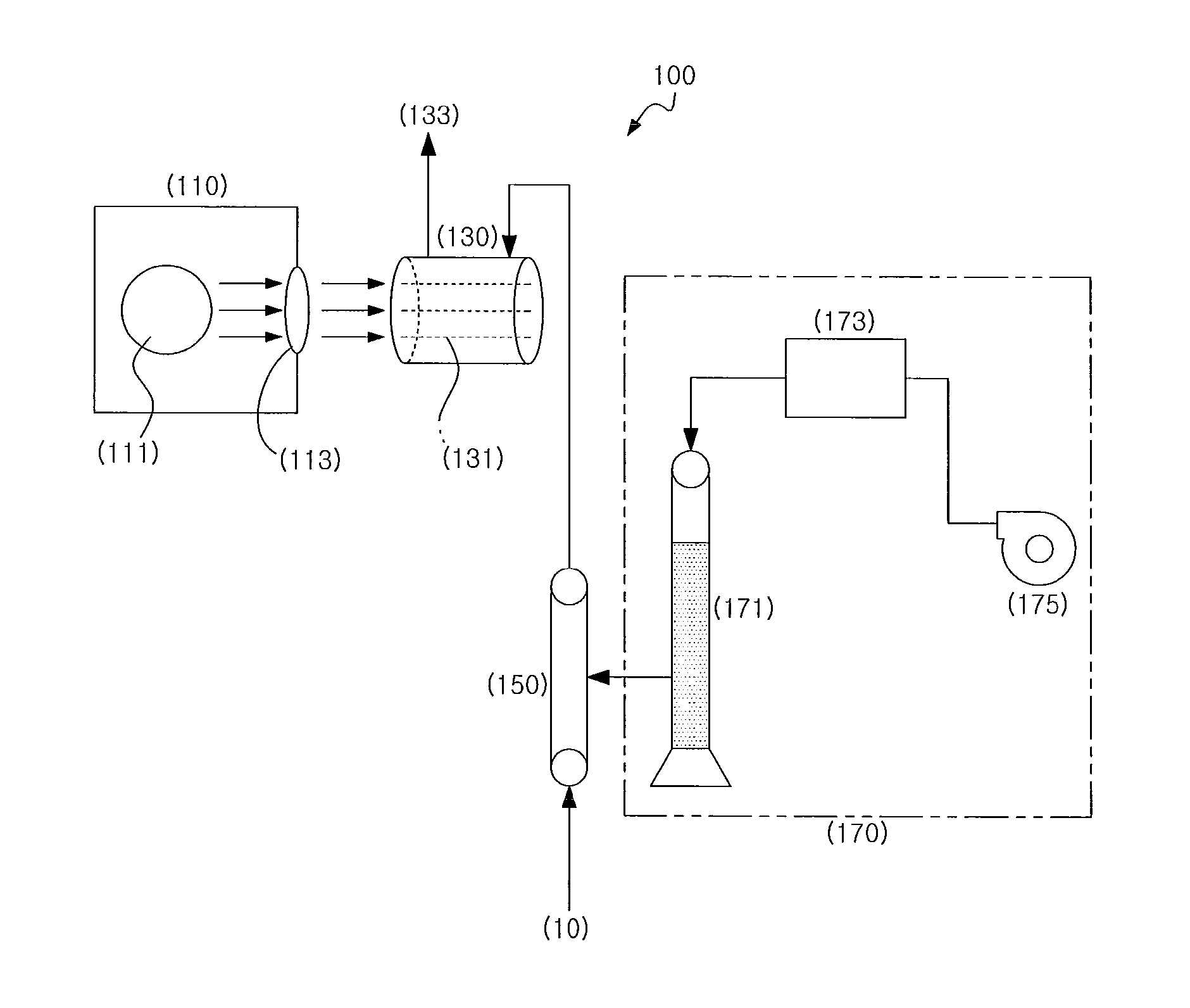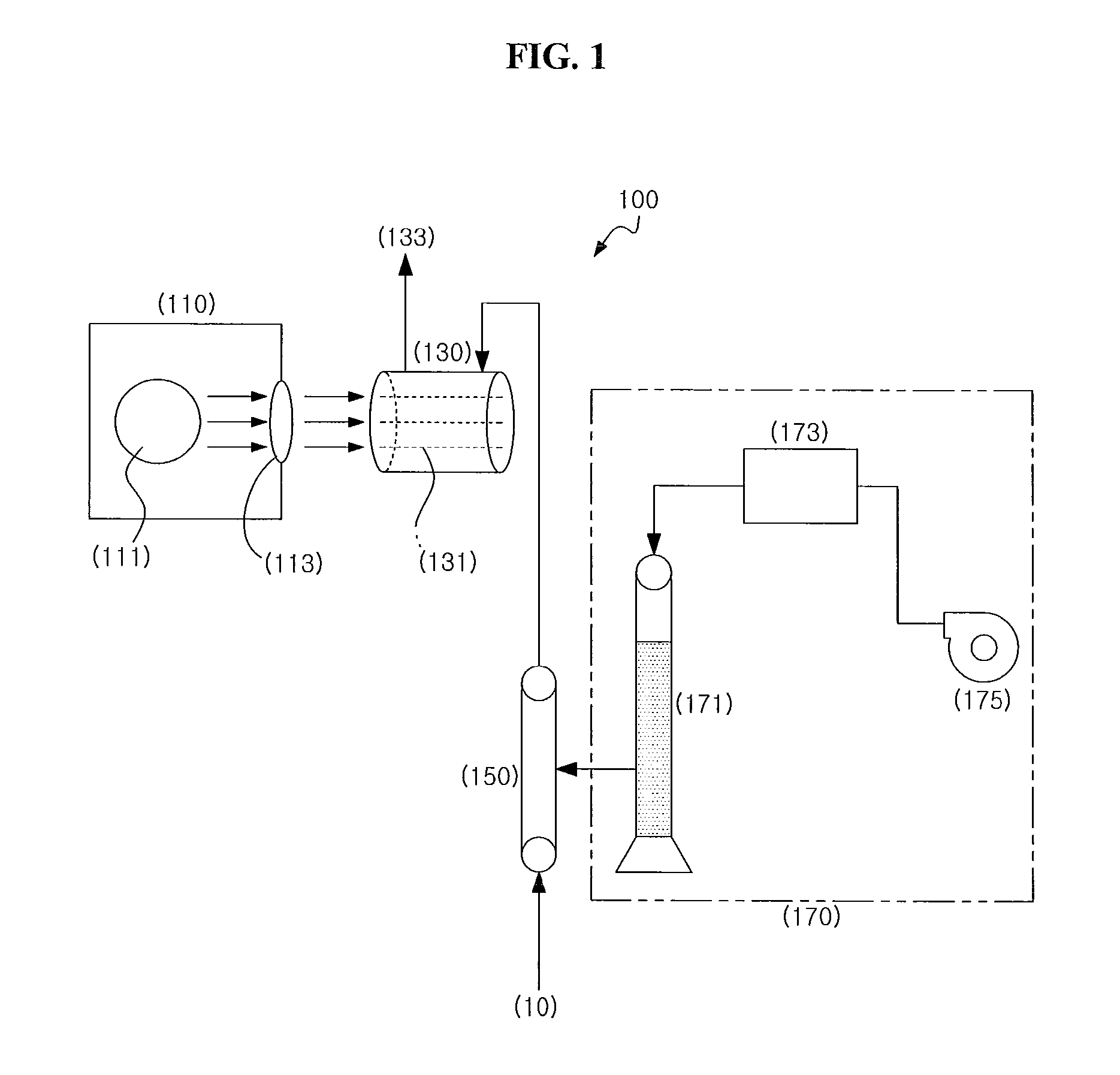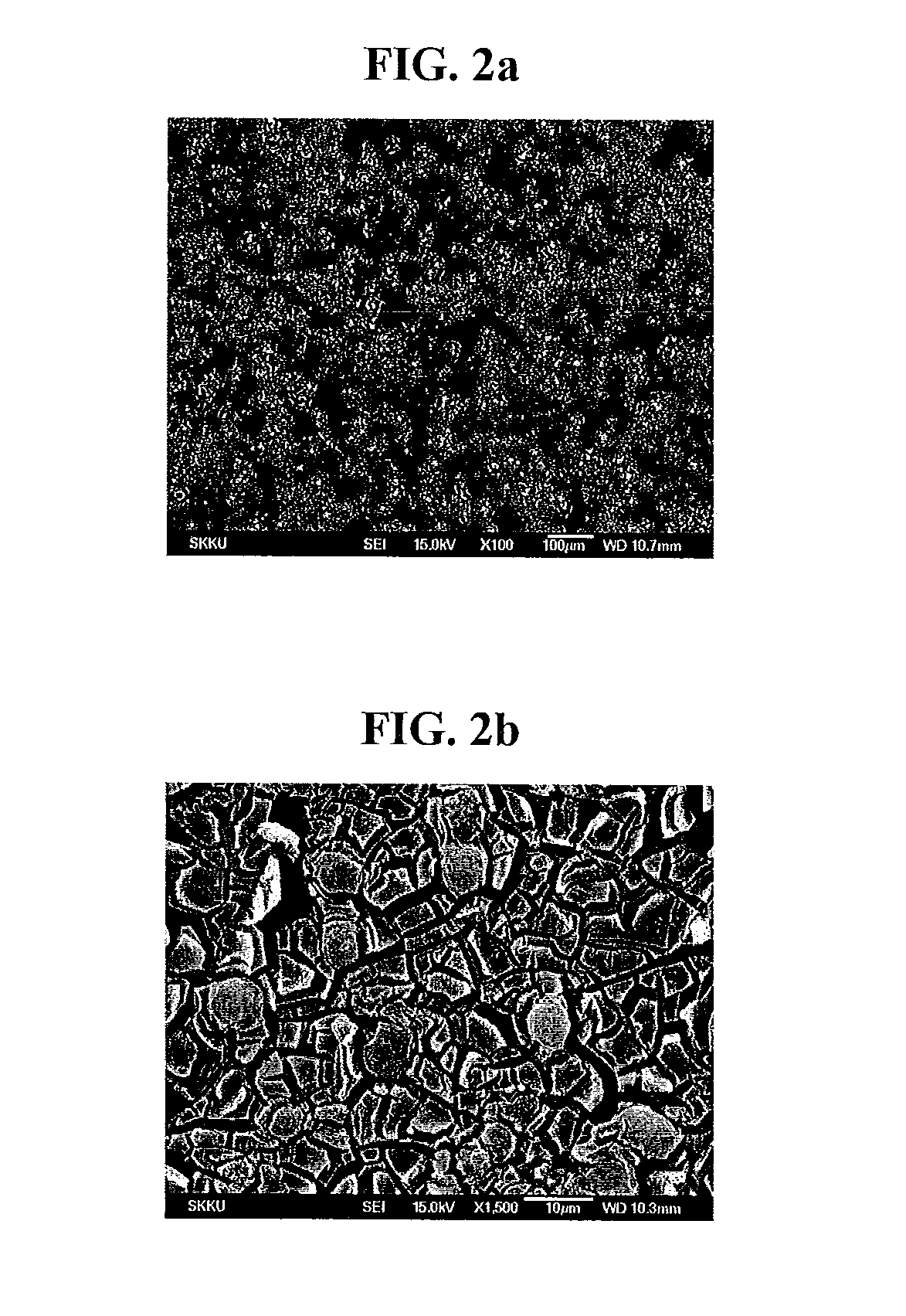Photocatalyst, preparation method thereof, photo reactor, and photolysis process
a photocatalyst and photoreactor technology, applied in the field of photocatalysts, can solve the problems of carcinogenesis, severe problems, and disorders of respiratory organs, and achieve the effect of improving photoactivity and excellent photolysis efficiency
- Summary
- Abstract
- Description
- Claims
- Application Information
AI Technical Summary
Benefits of technology
Problems solved by technology
Method used
Image
Examples
preparation example 1
Synthesis of Titanium Dioxide
[0149]3 parts by weight of Ti(OC4H9)4 and 8 parts by weight of nonadecylamine (C19H41N, Tokyo Chemical Industry Co., Ltd., Japan, Molecular weight 283.54) consisting of 19 carbon atoms were mixed, relative to 100 parts by weight of alcohol and stirred for 60 minutes, and then 0.1 parts by weight of titanium tetraisopropoxide (TTIP) was added thereto and sufficiently reacted with stirring for 30 minutes, followed by drying at 100° C. for 2 hours.
[0150]Subsequently, the dried photocatalyst was precipitated in 9 ml / L nitric acid aqueous solution for 4 hours to extract the nonadecylamine component.
[0151]Then, the photocatalyst, wherein pores were formed, was first sintered at 100° C. for 1 hour and second sintered at 600° C. for 1 hour, such that titanium dioxide had a crystal characteristic.
[0152]The prepared titanium dioxide had a specific surface area of 175 m2 / g. Then, titanium dioxide having an average diameter of 35 nm was prepared by controlling the p...
preparation example 2
[0153]11 parts by weight of titanium tetraisopropoxide (TTIP) relative to 100 parts by weight of ethanol was added and stirred for 30 minutes, and then 2.29 Ml of water was added thereto and reacted for 120 minutes. 5.5 parts by weight of activated carbon having an average diameter of 0.3 μm was added thereto, mixed and sufficiently stirred for 10 minutes with an ultrasonic processor.
[0154]The mixed liquid prepared as such, in a sol state, was fixed on surfaces of optical fibers by a dip coating method, and dried at room temperature for 2 hours. The dried reactant was again heat treated (sintered) at 550° C. for 2 hours to remove the scattered activated carbon and to have a crystal characteristic of titanium dioxide.
[0155]The obtained titanium dioxide had a specific surface area of 325 m2 / g. Titanium dioxide according to Preparation Example 2 is shown in FIG. 2a (100-fold magnification) and FIG. 2b (1,500-fold magnification).
example 1
[0156]2.5 g of the titanium dioxide prepared in Preparation Example 1 was supported in 100 ml of ethanol in which Ruthenium 535 bis-TBA (C58H86O8N8S2Ru, Dyesol Co.,) was dissolved in a concentration of 1×10−4M, and then stirred for 24 hours.
[0157]Said solution was centrifuged at a speed of 10,000 rpm for 10 minutes using a centrifuge (5804 R, Eppendorf) to separate a colorless solution at the upper part and a violet layer at the lower part. The titanium dioxide dyed as such was dried in a drying oven at 120° C. for 12 hours.
[0158]Subsequently, 0.01 g of platinum (Pt) and 3.8 g of titanium dioxide were added to 2,000 ml of 2M Na2CO3 solution and stirred for 5 hours, while being irradiated with a 500 W mercury lamp (Hg lamp), and the resulting solution was centrifuged at a speed of 10,000 rpm for 10 minutes using said centrifuge and washed 3 times using distilled water.
[0159]Then, the washed solution was dried at 80° C. for 12 hours to finally prepare a photocatalyst in a state of pla...
PUM
| Property | Measurement | Unit |
|---|---|---|
| specific surface area | aaaaa | aaaaa |
| particle diameter | aaaaa | aaaaa |
| temperature | aaaaa | aaaaa |
Abstract
Description
Claims
Application Information
 Login to View More
Login to View More - R&D
- Intellectual Property
- Life Sciences
- Materials
- Tech Scout
- Unparalleled Data Quality
- Higher Quality Content
- 60% Fewer Hallucinations
Browse by: Latest US Patents, China's latest patents, Technical Efficacy Thesaurus, Application Domain, Technology Topic, Popular Technical Reports.
© 2025 PatSnap. All rights reserved.Legal|Privacy policy|Modern Slavery Act Transparency Statement|Sitemap|About US| Contact US: help@patsnap.com



